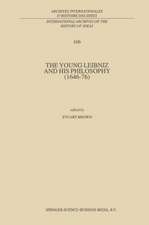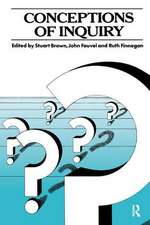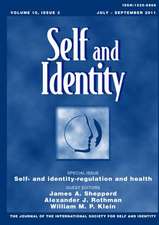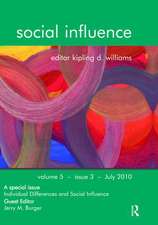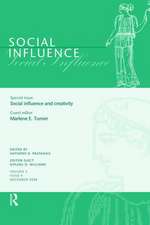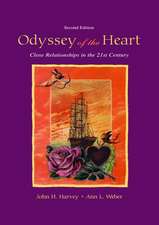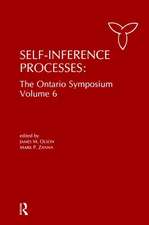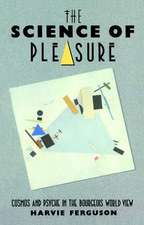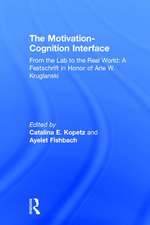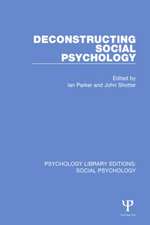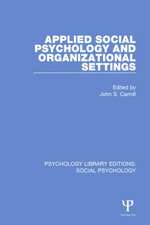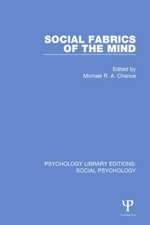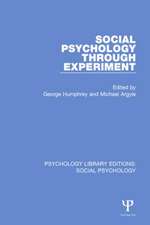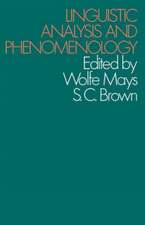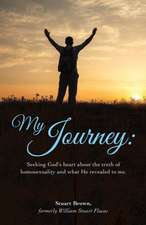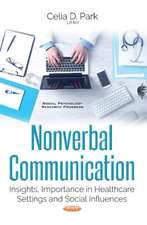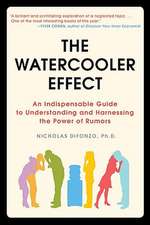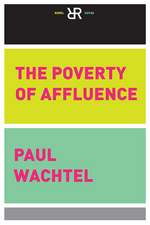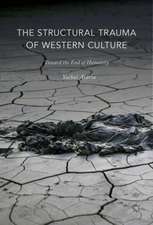Play: How It Shapes the Brain, Opens the Imagination, and Invigorates the Soul
Autor Stuart Brown Christopher Vaughanen Limba Engleză Paperback – 31 mar 2010 – vârsta de la 18 ani
Read Stuart Brown's posts on the Penguin Blog.
From a leading expert, a groundbreaking book on the science of play, and its essential role in fueling our happiness and intelligence throughout our lives
We've all seen the happiness on the face of a child while playing in the school yard. Or the blissful abandon of a golden retriever racing across a lawn. This is the joy of play. By definition, play is purposeless, all-consuming, and fun. But as Dr. Stuart Brown illustrates, play is anything but trivial. It is a biological drive as integral to our health as sleep or nutrition. We are designed by nature to flourish through play.
Dr. Brown has spent his career studying animal behavior and conducting more than six- thousand "play histories" of humans from all walks of life-from serial murderers to Nobel Prize winners. Backed by the latest research, Play (20,000 copies in print) explains why play is essential to our social skills, adaptability, intelligence, creativity, ability to problem solve and more. Particularly in tough times, we need to play more than ever, as it's the very means by which we prepare for the unexpected, search out new solutions, and remain optimistic. A fascinating blend of cutting-edge neuroscience, biology, psychology, social science, and inspiring human stories of the transformative power of play, this book proves why play just might be the most important work we can ever do.
From a leading expert, a groundbreaking book on the science of play, and its essential role in fueling our happiness and intelligence throughout our lives
We've all seen the happiness on the face of a child while playing in the school yard. Or the blissful abandon of a golden retriever racing across a lawn. This is the joy of play. By definition, play is purposeless, all-consuming, and fun. But as Dr. Stuart Brown illustrates, play is anything but trivial. It is a biological drive as integral to our health as sleep or nutrition. We are designed by nature to flourish through play.
Dr. Brown has spent his career studying animal behavior and conducting more than six- thousand "play histories" of humans from all walks of life-from serial murderers to Nobel Prize winners. Backed by the latest research, Play (20,000 copies in print) explains why play is essential to our social skills, adaptability, intelligence, creativity, ability to problem solve and more. Particularly in tough times, we need to play more than ever, as it's the very means by which we prepare for the unexpected, search out new solutions, and remain optimistic. A fascinating blend of cutting-edge neuroscience, biology, psychology, social science, and inspiring human stories of the transformative power of play, this book proves why play just might be the most important work we can ever do.
Preț: 100.44 lei
Nou
Puncte Express: 151
Preț estimativ în valută:
19.22€ • 20.07$ • 15.87£
19.22€ • 20.07$ • 15.87£
Carte disponibilă
Livrare economică 25 martie-08 aprilie
Livrare express 11-15 martie pentru 20.31 lei
Preluare comenzi: 021 569.72.76
Specificații
ISBN-13: 9781583333785
ISBN-10: 1583333789
Pagini: 229
Dimensiuni: 137 x 208 x 20 mm
Greutate: 0.23 kg
Editura: Avery Publishing Group
ISBN-10: 1583333789
Pagini: 229
Dimensiuni: 137 x 208 x 20 mm
Greutate: 0.23 kg
Editura: Avery Publishing Group
Recenzii
Notă biografică
Stuart Brown, M.D. is a medical doctor, psychiatrist, clinical researcher, and the founder of the National Institute for Play. He speaks regularly to Fortune 500 companies and groups across the country on the significance of play in our lives. The producer of a three-part PBS series, The Promise of Play, he has also appeared on NPR and was featured in a front-page story in The New York Times Magazine. He lives in Carmel Valley, California.
Christopher Vaughan has been a journalist for more than twenty years. He cowrote the national bestseller The Promise of Sleep.
Christopher Vaughan has been a journalist for more than twenty years. He cowrote the national bestseller The Promise of Sleep.
Extras
Chapter One
The promise of play
After five hours of driving over the tire-melting highways of the Nevada and Utah deserts, I am beat. My yellow Lab, Jake, shares the emotion. He is draped across the backseat, all the air let out of him. The last ten miles of our journey is an unpaved, rattling road up to my cousin Al's ranch, so it is half an hour more before I shut down the engine and the dust cloud that has been following us blankets the car.
Then something miraculous occurs.
I open the door for Jake and he freezes, every sense aquiver. He instantly takes in the whole scene: a bright August day, four acres of pasture, a dozen horses, my cousin Al, his four kids, and two dogs. A light breeze rustles aspen leaves, wafting scents of hay and horses across the Utah ranch. Doggie heaven.
In half a second Jake is flying out the door, a blond blur zipping toward the pasture. He races at full gallop one way and reverses, paws tearing up the dust in a skidding turn, then accelerates to warp speed in the opposite direction. His mouth is agape, the corners pulled back in a canine grin, his tongue lolling out one side.
Jake blasts into the maze of animals without hesitation. I worry about how the horses will react, but they don't shy. In a flicker the horses are jumping and gamboling. It seems that we all—adults, kids, dogs, horses— recognize that Jake is consumed with the joy of play. All of us are caught up in the moment.
Jake initiates a free-for-all game of follow the leader. He darts from horse, to person, to dog, to pony, to person, and back to horse in an outstanding display of speed, athleticism, and pure exuberance. Jake shoulder- checks another dog and sends him flying, but he doesn't lose a bit of speed and the other dog is right back up and into the chase. The children squeal with delight and run after Jake as he does figure eights. The adults are soon whooping and running. Even some observing magpies get caught up in the act, swooping over the melee.
The moment is captivating, gleeful, unexpected, and short-lived. After thirty seconds the horses scatter and the dogs lie down, panting and cooling their bellies in the grass. All of us feel completely exuberant. We catch our breath and laugh. The tension and fatigue of the drive has fallen from my shoulders. The kids are giggling. The rest of the day has a lightness and ease that I hadn't felt for a long time.
On that day, Jake gave a compact demonstration of what years of academic and clinical research has taught me about the power of play. Most obviously, it is intensely pleasurable. It energizes us and enlivens us. It eases our burdens. It renews our natural sense of optimism and opens us up to new possibilities.
Those are all wonderful, admirable, valuable qualities. But that is just the beginning of the story. Neuroscientists, developmental biologists, psychologists, social scientists, and researchers from every point of the scientific compass now know that play is a profound biological process. It has evolved over eons in many animal species to promote survival. It shapes the brain and makes animals smarter and more adaptable. In higher animals, it fosters empathy and makes possible complex social groups. For us, play lies at the core of creativity and innovation.
Of all animal species, humans are the biggest players of all. We are built to play and built through play. When we play, we are engaged in the purest expression of our humanity, the truest expression of our individuality. Is it any wonder that often the times we feel most alive, those that make up our best memories, are moments of play?
That is something that struck me as I was reading obituaries of those who lost their lives on September 11, 2001, stories I began collecting because they were such poignant and gripping portraits. Soon I realized that what people most remembered about those who died were play moments or play activities. The March 31, 2002, edition of The New York Times, to take one example, has obituaries with these headlines: "A Spitball-Shooting Executive," "A Frank Zappa Fan," "The Lawn King: A Practical Joker with a Heart," "A Lover of Laughter." What dominated the profiles beneath the headlines were remembrances of play states with loved ones, which were like joyful threads running through their lives, weaving memories and binding them together emotionally.
I have spent a career studying play, communicating the science of play to the public, and consulting for Fortune 500 companies on how to incorporate it into business. I have used play therapies to help people who are clinically depressed. I frequently talk with groups of parents who inevitably are concerned and conflicted about what constitutes healthy play for their kids. I have gathered and analyzed thousands of case studies that I call play histories. I have found that remembering what play is all about and making it part of our daily lives are probably the most important factors in being a fulfilled human being. The ability to play is critical not only to being happy, but also to sustaining social relationships and being a creative, innovative person.
If that seems to be a big claim, consider what the world would be like without play. It's not just an absence of games or sports. Life without play is a life without books, without movies, art, music, jokes, dramatic stories. Imagine a world with no flirting, no day-dreaming, no comedy, no irony. Such a world would be a pretty grim place to live. In a broad sense, play is what lifts people out of the mundane. I sometimes compare play to oxygen— it's all around us, yet goes mostly unnoticed or unappreciated until it is missing.
But what happens to play in our lives? Nearly every one of us starts out playing quite naturally. As children, we don't need instruction in how to play. We just find what we enjoy and do it. Whatever "rules" there are to play, we learn from our playmates. And from our play we learn how the world works, and how friends interact. By playing, we learn about the mystery and excitement that the world can hold in a tree house, an old tire swing, or a box of crayons.
At some point as we get older, however, we are made to feel guilty for playing. We are told that it is unproductive, a waste of time, even sinful. The play that remains is, like league sports, mostly very organized, rigid, and competitive. We strive to always be productive, and if an activity doesn't teach us a skill, make us money, or get on the boss's good side, then we feel we should not be doing it. Sometimes the sheer demands of daily living seem to rob us of the ability to play.
The skeptics among the audiences I talk to will say, "Well, duh. Of course you will be happy if you play all the time. But for those of us who aren't rich, or retired, or both, there's simply is no time for play." Or they might say that if they truly gave in to the desire to experience the joy of free play, they would never get anything done.
This is not the case. We don't need to play all the time to be fulfilled. The truth is that in most cases, play is a catalyst. The beneficial effects of getting just a little true play can spread through our lives, actually making us more productive and happier in everything we do.
One example of this is Laurel, the CEO of a successful commercial real estate company. During her late twenties, Laurel married and had two children, all while establishing her business. Her relationship with her husband was close and compatible, and she adored her four-and ten-year-olds. She saw herself as blessed and fortunate.
Her days hummed like a turbocharged engine. Up at five, she usually ran four or five miles on odd days and swam and lifted weights on even days. She didn't work weekends and usually had enough steam left for "quality time" with her supportive husband and kids, church, and her closest friends.
She felt that she had a healthy mix of play and work, but when she passed forty she began to dread her schedule. She didn't yet feel a need to quit any of her commitments or ease off, but slowly she realized that though she had fun with her husband and kids and a sense of enthusiasm about her work, she was missing . . . joy.
So Laurel set about finding where it had gone. She remembered back to her earliest joyful memories and realized they centered on horses. As she reconstructed her own play history, she realized that horses had grabbed her from the first time she saw one. As a toddler she loved bouncing on her hobbyhorse. One of her fondest memories was befriending a local backyard horse and secretly riding it at age seven. She would entice the horse to the fence with carrots and coax it to allow her to climb up and ride bareback, completely unbeknownst to the owner or her parents. As dangerous as it was for a seven-year-old to ride this way, it gave Laurel a sense of her own power. Later she started hanging around stables, becoming an accomplished horsewoman and as a young adult competing as a professional rider. She eventually burned out on horse shows and settled into marriage and business.
Yet she now realized she longed "just to ride."
Laurel decided to make this happen. She found a horse to lease and began to ride again. The feelings of joy and exhilaration came back the first time she climbed onto the horse. Now she makes the time to go riding once a week.
What surprises her most since she incorporated the pure play of riding back into her life is how complete and whole she now feels in all other areas of her life. The bloom of "irrational bliss" she experiences in the care of her horse, from riding it regularly, and even occasionally riding again in small local shows, has spilled over into her family and work lives. The little chores of daily living don't seem so difficult anymore.
She is also surprised by the subtle shift in her relationship with her husband. "It's just easier now. I look forward to talking more often now," Laurel says. Before rediscovering her horse-based play, when she approached her husband for a discussion she was defensively anticipating difficulties or thinking of things that needed doing. "It felt more like job-sharing than being a couple."
At some offices, play is becoming increasingly recognized as an important component of success. And I'm not just talking about Ping-Pong tables in the break room. Employees who have engaged in play throughout their lives outside of work and bring that emotion to the office are able to do well at work-related tasks that at first might seem to have no connection at all to play.
An example: Cal Tech's Jet Propulsion Laboratory (JPL) has been the United States' premier aerospace research facility for more than seven decades. The scientists and engineers at JPL have designed and managed major components of every manned and unmanned mission of our time, and have been completely responsible for dreaming up, building, and operating complex projects like the robot vehicles that landed on Mars and explored the planet's surface for years. You might say that JPL invented the Space Age. No matter how big and ambitious the goal, the researchers could always be relied on to say, "We can do that."
But in the late nineties, the lab's management was saying, "JPL, we have a problem." As the lab neared the new century, the group of engineers and scientists who had come on board in the 1960s, those who put men on the moon and built robotic probes to explore the solar system, were retiring in large numbers. And JPL was having a hard time replacing them. Even though JPL hired the top graduates from top engineering schools like MIT, Stanford, and even Cal Tech itself, the new hires were often missing something. They were not very good at certain types of problem solving that are critical to the job. The experienced managers found that the newly minted engineers might excel at grappling with theoretical, mathematical problems at the frontiers of engineering, but they didn't do well with the practical difficulties of taking a complex project from theory to practice. Unlike their elders, the young engineers couldn't spot the key flaw in one of the complex systems they were working on, toss the problem around, break it down, pick it apart, tease out its critical elements, and rearrange them in innovative ways that led to a solution.
Why was JPL hiring the wrong sorts of engineers? The people JPL brought aboard had earned the highest grades at the best schools, but academic excellence was obviously not the most important measure of the graduates' problem-solving skills. Like good engineers, JPL management analyzed the problem and concluded that when hiring they were looking at the wrong data. Those job candidates good at problem solving and those who were not could be sorted, they believed, if they found the right metrics.
Then the head of JPL found Nate Jones. Jones ran a machine shop that specialized in precision racing and Formula One tires, and he had noticed that many of the new kids coming in to work at the shop were also not able to problem solve. Jones and his wife, who is a teacher, wondered what had changed. After questioning the new kids and the older employees, Jones found that those who had worked and played with their hands as they were growing up were able to "see solutions" that those who hadn't worked with their hands could not. Jones wrote an article about what he had found, which is how he came to the attention of JPL management.
The JPL managers went back to look at their own retiring engineers and found a similar pattern. They found that in their youth, their older, problem-solving employees had taken apart clocks to see how they worked, or made soapbox derby racers, or built hi-fi stereos, or fixed appliances. The young engineering school graduates who had also done these things, who had played with their hands, were adept at the kinds of problem solving that management sought. Those who hadn't, generally were not. From that point on, JPL made questions about applicants' youthful projects and play a standard part of job interviews.
What Laurel discovered through experience, the JPL managers discovered through research: there is a kind of magic in play. What might seem like a frivolous or even childish pursuit is ultimately beneficial. It's paradoxical that a little bit of "nonproductive" activity can make one enormously more productive and invigorated in other aspects of life. When an activity speaks to one's deepest truth, as horseback riding did for Laurel, it is a catalyst, enlivening everything else.
Once people understand what play does for them, they can learn to bring a sense of excitement and adventure back to their lives, make work an extension of their play lives, and engage fully with the world.
I don't think it is too much to say that play can save your life. It certainly has salvaged mine. Life without play is a grinding, mechanical existence organized around doing the things necessary for survival. Play is the stick that stirs the drink. It is the basis of all art, games, books, sports, movies, fashion, fun, and wonder—in short, the basis of what we think of as civilization. Play is the vital essence of life. It is what makes life lively.
When people know their core truths and live in accord with what I call their "play personality," the result is always a life of incredible power and grace. British educator Sir Ken Robinson has spoken about finding such power and grace in the life of dancer Gillian Lynne, who was the choreographer for the musicals Cats and Phantom of the Opera. Robinson interviewed her for a book he is writing, titled Epiphany, about how people discover their path in life. Lynne told him about growing up in 1930s Britain, about doing terribly in school because she was always fidgeting and never paid attention to lessons. "I suppose that now people would say she had ADHD, but people didn't know you could have that then," Robinson says wryly. "It wasn't an available diagnosis at the time."
Instead, school officials told Lynne's parents that she was mentally disabled. Lynne and her mother went to see a specialist, who talked to Gillian about school while the girl sat on her hands, trying not to fidget. After twenty minutes, the doctor asked to speak to Lynne's mother alone in the hallway. As they were leaving the office, the doctor flipped on the radio, and when they were shut in the hallway the doctor pointed through the window back into the office. "Look," he said, and directed the mother's attention to Gillian, who had gotten up and started moving to the music as soon as they left. "Mrs. Lynne," said the doctor, "your daughter's not sick, she's a dancer."
The doctor recommended enrolling her daughter in dance school. When Gillian got there she was delighted to find a whole room of people like herself, "people who had to move to think," as Lynne explained it. Lynne went on to become a principal dancer in the Royal Ballet, then founded her own dance company and eventually began working with Andrew Lloyd Webber and other producers.
"Here is a woman who has helped put together some of the most successful musical productions in history, has given pleasure to millions, and is a multimillionaire," Robinson says. Of course if she were a child now, he adds, "someone would probably put her on drugs and tell her to calm down."
Robinson's story about Lynne was really about the strength and beauty of living in accordance with who she is—which for her meant living a life of motion and music. If her parents and teachers tried to make her into an engineer, Lynne would have been unhappy and unsuccessful.
Ultimately, this book is about understanding the role of play and using it to find and express our own core truths. It is about learning to harness a force that has been built into us through millions of years of evolution, a force that allows us to both discover our most essential selves and enlarge our world. We are designed to find fulfillment and creative growth through play.
The promise of play
After five hours of driving over the tire-melting highways of the Nevada and Utah deserts, I am beat. My yellow Lab, Jake, shares the emotion. He is draped across the backseat, all the air let out of him. The last ten miles of our journey is an unpaved, rattling road up to my cousin Al's ranch, so it is half an hour more before I shut down the engine and the dust cloud that has been following us blankets the car.
Then something miraculous occurs.
I open the door for Jake and he freezes, every sense aquiver. He instantly takes in the whole scene: a bright August day, four acres of pasture, a dozen horses, my cousin Al, his four kids, and two dogs. A light breeze rustles aspen leaves, wafting scents of hay and horses across the Utah ranch. Doggie heaven.
In half a second Jake is flying out the door, a blond blur zipping toward the pasture. He races at full gallop one way and reverses, paws tearing up the dust in a skidding turn, then accelerates to warp speed in the opposite direction. His mouth is agape, the corners pulled back in a canine grin, his tongue lolling out one side.
Jake blasts into the maze of animals without hesitation. I worry about how the horses will react, but they don't shy. In a flicker the horses are jumping and gamboling. It seems that we all—adults, kids, dogs, horses— recognize that Jake is consumed with the joy of play. All of us are caught up in the moment.
Jake initiates a free-for-all game of follow the leader. He darts from horse, to person, to dog, to pony, to person, and back to horse in an outstanding display of speed, athleticism, and pure exuberance. Jake shoulder- checks another dog and sends him flying, but he doesn't lose a bit of speed and the other dog is right back up and into the chase. The children squeal with delight and run after Jake as he does figure eights. The adults are soon whooping and running. Even some observing magpies get caught up in the act, swooping over the melee.
The moment is captivating, gleeful, unexpected, and short-lived. After thirty seconds the horses scatter and the dogs lie down, panting and cooling their bellies in the grass. All of us feel completely exuberant. We catch our breath and laugh. The tension and fatigue of the drive has fallen from my shoulders. The kids are giggling. The rest of the day has a lightness and ease that I hadn't felt for a long time.
On that day, Jake gave a compact demonstration of what years of academic and clinical research has taught me about the power of play. Most obviously, it is intensely pleasurable. It energizes us and enlivens us. It eases our burdens. It renews our natural sense of optimism and opens us up to new possibilities.
Those are all wonderful, admirable, valuable qualities. But that is just the beginning of the story. Neuroscientists, developmental biologists, psychologists, social scientists, and researchers from every point of the scientific compass now know that play is a profound biological process. It has evolved over eons in many animal species to promote survival. It shapes the brain and makes animals smarter and more adaptable. In higher animals, it fosters empathy and makes possible complex social groups. For us, play lies at the core of creativity and innovation.
Of all animal species, humans are the biggest players of all. We are built to play and built through play. When we play, we are engaged in the purest expression of our humanity, the truest expression of our individuality. Is it any wonder that often the times we feel most alive, those that make up our best memories, are moments of play?
That is something that struck me as I was reading obituaries of those who lost their lives on September 11, 2001, stories I began collecting because they were such poignant and gripping portraits. Soon I realized that what people most remembered about those who died were play moments or play activities. The March 31, 2002, edition of The New York Times, to take one example, has obituaries with these headlines: "A Spitball-Shooting Executive," "A Frank Zappa Fan," "The Lawn King: A Practical Joker with a Heart," "A Lover of Laughter." What dominated the profiles beneath the headlines were remembrances of play states with loved ones, which were like joyful threads running through their lives, weaving memories and binding them together emotionally.
I have spent a career studying play, communicating the science of play to the public, and consulting for Fortune 500 companies on how to incorporate it into business. I have used play therapies to help people who are clinically depressed. I frequently talk with groups of parents who inevitably are concerned and conflicted about what constitutes healthy play for their kids. I have gathered and analyzed thousands of case studies that I call play histories. I have found that remembering what play is all about and making it part of our daily lives are probably the most important factors in being a fulfilled human being. The ability to play is critical not only to being happy, but also to sustaining social relationships and being a creative, innovative person.
If that seems to be a big claim, consider what the world would be like without play. It's not just an absence of games or sports. Life without play is a life without books, without movies, art, music, jokes, dramatic stories. Imagine a world with no flirting, no day-dreaming, no comedy, no irony. Such a world would be a pretty grim place to live. In a broad sense, play is what lifts people out of the mundane. I sometimes compare play to oxygen— it's all around us, yet goes mostly unnoticed or unappreciated until it is missing.
But what happens to play in our lives? Nearly every one of us starts out playing quite naturally. As children, we don't need instruction in how to play. We just find what we enjoy and do it. Whatever "rules" there are to play, we learn from our playmates. And from our play we learn how the world works, and how friends interact. By playing, we learn about the mystery and excitement that the world can hold in a tree house, an old tire swing, or a box of crayons.
At some point as we get older, however, we are made to feel guilty for playing. We are told that it is unproductive, a waste of time, even sinful. The play that remains is, like league sports, mostly very organized, rigid, and competitive. We strive to always be productive, and if an activity doesn't teach us a skill, make us money, or get on the boss's good side, then we feel we should not be doing it. Sometimes the sheer demands of daily living seem to rob us of the ability to play.
The skeptics among the audiences I talk to will say, "Well, duh. Of course you will be happy if you play all the time. But for those of us who aren't rich, or retired, or both, there's simply is no time for play." Or they might say that if they truly gave in to the desire to experience the joy of free play, they would never get anything done.
This is not the case. We don't need to play all the time to be fulfilled. The truth is that in most cases, play is a catalyst. The beneficial effects of getting just a little true play can spread through our lives, actually making us more productive and happier in everything we do.
One example of this is Laurel, the CEO of a successful commercial real estate company. During her late twenties, Laurel married and had two children, all while establishing her business. Her relationship with her husband was close and compatible, and she adored her four-and ten-year-olds. She saw herself as blessed and fortunate.
Her days hummed like a turbocharged engine. Up at five, she usually ran four or five miles on odd days and swam and lifted weights on even days. She didn't work weekends and usually had enough steam left for "quality time" with her supportive husband and kids, church, and her closest friends.
She felt that she had a healthy mix of play and work, but when she passed forty she began to dread her schedule. She didn't yet feel a need to quit any of her commitments or ease off, but slowly she realized that though she had fun with her husband and kids and a sense of enthusiasm about her work, she was missing . . . joy.
So Laurel set about finding where it had gone. She remembered back to her earliest joyful memories and realized they centered on horses. As she reconstructed her own play history, she realized that horses had grabbed her from the first time she saw one. As a toddler she loved bouncing on her hobbyhorse. One of her fondest memories was befriending a local backyard horse and secretly riding it at age seven. She would entice the horse to the fence with carrots and coax it to allow her to climb up and ride bareback, completely unbeknownst to the owner or her parents. As dangerous as it was for a seven-year-old to ride this way, it gave Laurel a sense of her own power. Later she started hanging around stables, becoming an accomplished horsewoman and as a young adult competing as a professional rider. She eventually burned out on horse shows and settled into marriage and business.
Yet she now realized she longed "just to ride."
Laurel decided to make this happen. She found a horse to lease and began to ride again. The feelings of joy and exhilaration came back the first time she climbed onto the horse. Now she makes the time to go riding once a week.
What surprises her most since she incorporated the pure play of riding back into her life is how complete and whole she now feels in all other areas of her life. The bloom of "irrational bliss" she experiences in the care of her horse, from riding it regularly, and even occasionally riding again in small local shows, has spilled over into her family and work lives. The little chores of daily living don't seem so difficult anymore.
She is also surprised by the subtle shift in her relationship with her husband. "It's just easier now. I look forward to talking more often now," Laurel says. Before rediscovering her horse-based play, when she approached her husband for a discussion she was defensively anticipating difficulties or thinking of things that needed doing. "It felt more like job-sharing than being a couple."
At some offices, play is becoming increasingly recognized as an important component of success. And I'm not just talking about Ping-Pong tables in the break room. Employees who have engaged in play throughout their lives outside of work and bring that emotion to the office are able to do well at work-related tasks that at first might seem to have no connection at all to play.
An example: Cal Tech's Jet Propulsion Laboratory (JPL) has been the United States' premier aerospace research facility for more than seven decades. The scientists and engineers at JPL have designed and managed major components of every manned and unmanned mission of our time, and have been completely responsible for dreaming up, building, and operating complex projects like the robot vehicles that landed on Mars and explored the planet's surface for years. You might say that JPL invented the Space Age. No matter how big and ambitious the goal, the researchers could always be relied on to say, "We can do that."
But in the late nineties, the lab's management was saying, "JPL, we have a problem." As the lab neared the new century, the group of engineers and scientists who had come on board in the 1960s, those who put men on the moon and built robotic probes to explore the solar system, were retiring in large numbers. And JPL was having a hard time replacing them. Even though JPL hired the top graduates from top engineering schools like MIT, Stanford, and even Cal Tech itself, the new hires were often missing something. They were not very good at certain types of problem solving that are critical to the job. The experienced managers found that the newly minted engineers might excel at grappling with theoretical, mathematical problems at the frontiers of engineering, but they didn't do well with the practical difficulties of taking a complex project from theory to practice. Unlike their elders, the young engineers couldn't spot the key flaw in one of the complex systems they were working on, toss the problem around, break it down, pick it apart, tease out its critical elements, and rearrange them in innovative ways that led to a solution.
Why was JPL hiring the wrong sorts of engineers? The people JPL brought aboard had earned the highest grades at the best schools, but academic excellence was obviously not the most important measure of the graduates' problem-solving skills. Like good engineers, JPL management analyzed the problem and concluded that when hiring they were looking at the wrong data. Those job candidates good at problem solving and those who were not could be sorted, they believed, if they found the right metrics.
Then the head of JPL found Nate Jones. Jones ran a machine shop that specialized in precision racing and Formula One tires, and he had noticed that many of the new kids coming in to work at the shop were also not able to problem solve. Jones and his wife, who is a teacher, wondered what had changed. After questioning the new kids and the older employees, Jones found that those who had worked and played with their hands as they were growing up were able to "see solutions" that those who hadn't worked with their hands could not. Jones wrote an article about what he had found, which is how he came to the attention of JPL management.
The JPL managers went back to look at their own retiring engineers and found a similar pattern. They found that in their youth, their older, problem-solving employees had taken apart clocks to see how they worked, or made soapbox derby racers, or built hi-fi stereos, or fixed appliances. The young engineering school graduates who had also done these things, who had played with their hands, were adept at the kinds of problem solving that management sought. Those who hadn't, generally were not. From that point on, JPL made questions about applicants' youthful projects and play a standard part of job interviews.
What Laurel discovered through experience, the JPL managers discovered through research: there is a kind of magic in play. What might seem like a frivolous or even childish pursuit is ultimately beneficial. It's paradoxical that a little bit of "nonproductive" activity can make one enormously more productive and invigorated in other aspects of life. When an activity speaks to one's deepest truth, as horseback riding did for Laurel, it is a catalyst, enlivening everything else.
Once people understand what play does for them, they can learn to bring a sense of excitement and adventure back to their lives, make work an extension of their play lives, and engage fully with the world.
I don't think it is too much to say that play can save your life. It certainly has salvaged mine. Life without play is a grinding, mechanical existence organized around doing the things necessary for survival. Play is the stick that stirs the drink. It is the basis of all art, games, books, sports, movies, fashion, fun, and wonder—in short, the basis of what we think of as civilization. Play is the vital essence of life. It is what makes life lively.
When people know their core truths and live in accord with what I call their "play personality," the result is always a life of incredible power and grace. British educator Sir Ken Robinson has spoken about finding such power and grace in the life of dancer Gillian Lynne, who was the choreographer for the musicals Cats and Phantom of the Opera. Robinson interviewed her for a book he is writing, titled Epiphany, about how people discover their path in life. Lynne told him about growing up in 1930s Britain, about doing terribly in school because she was always fidgeting and never paid attention to lessons. "I suppose that now people would say she had ADHD, but people didn't know you could have that then," Robinson says wryly. "It wasn't an available diagnosis at the time."
Instead, school officials told Lynne's parents that she was mentally disabled. Lynne and her mother went to see a specialist, who talked to Gillian about school while the girl sat on her hands, trying not to fidget. After twenty minutes, the doctor asked to speak to Lynne's mother alone in the hallway. As they were leaving the office, the doctor flipped on the radio, and when they were shut in the hallway the doctor pointed through the window back into the office. "Look," he said, and directed the mother's attention to Gillian, who had gotten up and started moving to the music as soon as they left. "Mrs. Lynne," said the doctor, "your daughter's not sick, she's a dancer."
The doctor recommended enrolling her daughter in dance school. When Gillian got there she was delighted to find a whole room of people like herself, "people who had to move to think," as Lynne explained it. Lynne went on to become a principal dancer in the Royal Ballet, then founded her own dance company and eventually began working with Andrew Lloyd Webber and other producers.
"Here is a woman who has helped put together some of the most successful musical productions in history, has given pleasure to millions, and is a multimillionaire," Robinson says. Of course if she were a child now, he adds, "someone would probably put her on drugs and tell her to calm down."
Robinson's story about Lynne was really about the strength and beauty of living in accordance with who she is—which for her meant living a life of motion and music. If her parents and teachers tried to make her into an engineer, Lynne would have been unhappy and unsuccessful.
Ultimately, this book is about understanding the role of play and using it to find and express our own core truths. It is about learning to harness a force that has been built into us through millions of years of evolution, a force that allows us to both discover our most essential selves and enlarge our world. We are designed to find fulfillment and creative growth through play.
Descriere
A fascinating blend of cutting-edge neuroscience, biology, psychology, social science, and inspiring human stories, this work reveals the science of play and its essential role in fueling happiness and intelligence throughout one's lifetime.

